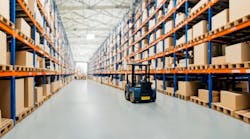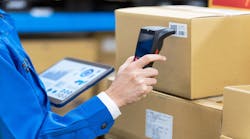Over the last few years, the pharma industry has entered a phase of rapid evolution as the focus of therapeutic treatment delivery methods shifts. Specifically, the industry has seen an expansion of injectable medications packed in vials and pre-filled syringes, as well as a movement toward more personalized medication packaging.
Several important trends underpin this shifting focus, according to a recent white paper from PMMI. Increased throughput needs at pharma plants are driving the expansion of automation in the production space. Manufacturers are also looking to harness the power of digitized data to drive efficiency improvements across operations. Sustainability and the expansion of direct-to-consumer shipping channels are also increasingly important for production strategies.
The COVID-19 pandemic significantly impacted pharmaceutical production. Supply chain issues caused problems in sourcing raw materials needed to produce and package products. The supply chain slowdown has impacted equipment orders, delaying scheduled deliveries and extending lead times. These challenges have caused pharma manufacturers to re-examine fundamental aspects of their supply chain logistics, particularly in light of the new trends affecting the industry.
Disruption to APIs
One of the greatest weaknesses exposed in the U.S. and European pharma supply chains during the pandemic was the heavy reliance on foreign sources for APIs. Foreign sources make up nearly 72% of APIs utilized in the U.S., and 80% of those used in Europe originate outside the EU. By location, the U.S. has less than 5% of large-scale API production sites in the world. This reliance on foreign sources created sudden and acute shortages when global supply chains faltered. These shortages have persisted, with 53% of companies interviewed in PMMI’s white paper stating that they still have problems consistently sourcing ingredients for production.
To alleviate this burden in the future, many have called for the diversification of the API supply chain, recommending that manufacturers source not only from multiple vendors but also multiple regions of the world. While the ideal solution would be to reshore API production with new facilities, this is unlikely to be practical for many reasons, including cost, environmental concerns and needed government intervention.
Disruption to raw materials for packaging
Supply chain issues and the upending of day-to-day production have made it an ongoing struggle to source the base materials needed for packaging. Essential materials for pharmaceutical packaging — such as paperboard, plastic resins and foils — have experienced prolonged supply chain shortages that have impacted the ability to produce the desired packaging. With the advent of COVID-19 vaccine mass production, there has also been an acute shortage of glass vials.
Disruption to equipment
Supply chain upheaval has also reached machine suppliers, creating challenges in sourcing machines and equipment. The combination of unstable supply chains and acute labor shortages has resulted in delays on new and existing orders. Lead times for new orders have extended months beyond pre-pandemic estimations. In all, 40% of companies interviewed for PMMI’s white paper stated that they were being directly affected by delays in delivery and extended lead times on equipment. Some companies also reported ongoing difficulties in sourcing replacement parts.
In the short term, the challenges from sourcing APIs, packaging materials and machinery have resulted in pharma manufacturers reevaluating their business strategies. New products, packaging formats and material changes, as well as new equipment integration and even plans for entirely new lines have been disrupted as pharma find itself unable to obtain the resources necessary to support these launches.
In the long term, the almost universal pain felt throughout the pharma industry due to supply chain breakdowns may spur greater cooperation. Supply chain issues have pinched all industry sectors, creating struggles that have been impossible to ignore for stakeholders. To prevent such profound future disruption, stakeholders in the pharma industry appear to be more open than ever to collaborating to find solutions and ease the burden for all.
It is more important than ever that the packaging and processing industries come together to share insights and innovations, and the best place to do that is PACK EXPO International (Oct. 23-26, 2022; McCormick Place, Chicago) — the most comprehensive packaging and processing show in the world in 2022. From connecting with colleagues and hearing from experts to seeing new technologies, materials and machinery-in-action, PACK EXPO International is the most efficient and effective way to discover packaging and processing solutions for over 40 vertical markets. For more information and to register, visit packexpointernational.com.






